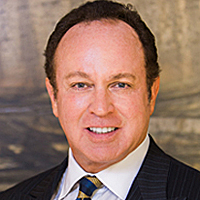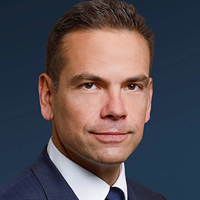
Political Ad Projections Keep Rising

It became clear shortly after the 2020 election — with Democrats narrowly in control of Congress — that the 2022 off-year campaign was going to be a barn burner for political spending. TV groups began to estimate the expected haul late last year, but those estimates are already being raised significantly.

Hilton Howell
Speaking to Wall Street analysts on Feb. 25 in his company’s quarterly conference call, Gray Television Chairman-CEO Hilton Howell said Gray’s new financial guidance included a “big change” to the political ad line.
“Specifically, we are today increasing our 2022 political revenue guidance by approximately 10% from the $525 million announced on our November 2021 earnings call, to $575 million today. This new target of $575 million represents a whopping 55% increase over the $372 million of political revenue that we achieved on a combined historical basis in the last mid-term election year of 2018,” Howell said.
Gray COO Bob Smith later noted that the company’s stations had already seen primary campaign ads begin in December in Alabama and Nebraska, and in January in Illinois.
Even without a presidential race on the ballot, The E.W. Scripps Co. is predicting that political ad revenues will equal the record spending seen in 2020.
“Scripps is expecting to reach 2020 political levels this year, even though it’s a mid-term, not presidential election. The growth will be driven by strong statewide Senate and governors’ races,” said Brian Lawlor, resident of local media. He noted that Scripps stations will benefit from five competitive Senate races, seven governors races and at least 25 competitive House races.

Perry Sook
With inflation heating up, one analyst asked Nexstar Media Group Chairman-CEO Perry Sook what impact that could have on television advertising.
“Historically, inflation has been a friend to our business because it gives us some ability, or cover, for pricing power, pricing increases. So, I don’t think inflation is a bad thing,” Sook replied.
Spot Categories Rise
Broadcaster after broadcaster reported continued advertising growth across all major categories, with the exception of automotive.

Brian Lawlor
At Scripps, Lawlor reported services up 14%; travel & leisure up more than 100%; media & communications up 25%; and home improvement up 16%. “We reached our 2019 core advertising performance in Q4 for the second quarter in a row, despite the headwinds of automotive. In fact, our forecast for the first quarter is that we’ll be up in results for five consecutive quarters of core advertising growth for Scripps, which is remarkable since it includes automotive,” he told analysts.

Tom Carter
Nexstar President-COO Tom Carter reported that other categories have picked up the slack for auto’s weakness. “Core television advertising revenue for the quarter of $494 million increased 4.3% over the prior year’s quarter as healthy demand form advertisers resulted in solid growth in eight of Nexstar’s top 10 advertising categories,” Carter reported. “Q4 top gaining categories were entertainment, sports betting, medical/healthcare, department stores and retail stores, and telecom, offset by continued declines in auto and insurance.”
One analyst was concerned that auto might finally rebound just about the time that political crowd-out hits later this year.
“We do believe that auto will rebound to a degree in the back half of the year,” Carter said. “Will it be able to compete with a political heavy environment? We believe it will.”
At Gray, Smith noted that auto used to make up 25% of non-political advertising, He said that was 17% for 2021. But Gray has diversified its ad base. He noted a focus on the health sector and most recently travel as growth areas. He said legal and home improvement have also grown at a healthy pace.
“As expected, our entertainment ad category, which included gaming and gambling companies, more than doubled over the year and is now our largest category,” Smith told the analysts. Going forward, Gray is separating that to report gaming as its own category.

Lachlan Murdoch
At the local station group, Fox Corp. CEO Lachlan Murdoch said sports betting is the leading category of advertising growth and is “significantly driving the advertising growth across our station group.” The category, he noted, is currently pacing up more than 100%.
“The overall market trends in local advertising also remain positive for us, as we achieved double-digit advertising growth in the quarter, when excluding political revenue. Perhaps even more importantly, our local advertising revenues have now fully recovered from the impact of COVID and are up over pre-pandemic levels,” Murdoch told Wall Street analysts.

Robert Weisbord
Sinclair Broadcast Group COO Robert Weisbord said: “We’re seeing restaurants. We’re seeing travel categories up significantly. As well, we’ve gone away from the reliance over the last several years on the auto category. And services continues to be our biggest category. And sports betting is the fastest-growing category.”
Weisbord later added that auto is expected to recover in the third quarter, as more chips become available. But he repeated the observation that the TV business is now less reliant on the auto sector.
Streaming Impacts Reverse Comp
The full-year review for the company previously known as ViacomCBS focused on a rebranding as Paramount. At one point during the lengthy presentation, which overwhelmingly focused on the Paramount+ streaming business, it was noted that with CBS programming available to streaming customers, growth in reverse comp is expected to slow as the “ask” from networks is moderated by multiple channels of distribution. That prompted analysts to inquire of broadcasters whether they are seeing that happen.

Chris Ripley
Sinclair CEO Chris Ripley said: “It is accurate what you’re hearing from other players that reverse retrans has grown significantly from basically zero about six or seven years ago to quite a significant number. And so, growth rates have come down quite dramatically. And we think we’re reaching sort of an equilibrium, if you will, in terms of what to expect in the marketplace. That’s a good thing.”
Scripps’ Lawlor noted: “Over the decades, the largest value of the relationship between the networks and affiliates has been the exclusivity of the programming that we get, and we pay for it in our local markets. In the last two years or so, the launch of the direct-to-consumer products by the networks has really begun to diminish that exclusivity in our local markets. I think the conversation is changing and the result of that diminished exclusivity is forcing a different value in the discussions with the networks.”

Kevin Latek
Kevin Latek, chief legal and development officer at Gray, added: “In the combined historical basis financial data that we provided today, you will see that the growth in network fees over the past five years has slowed. This is because Gray, Meredith and Quincy previously experienced large step-ups in network fees two years ago as the networks prepared for their contract renewals with the NFL. We expect this slowdown in network fee growth to continue as we progress to our new CBS affiliation term and our next affiliation terms with the other networks.”
Tech Competition Sees Varied Performance
For television’s main digital competitors for advertising, the quarter produced varied results.
At Meta Platforms, the new name for Facebook’s parent company, CEO Mark Zuckerberg noted headwinds from changes to Apple’s phone software.
“With Apple’s iOS changes and new regulation in Europe, there’s a clear trend where less data is available to deliver personalized ads,” he said on the company’s call. “But people still want to see relevant ads, and businesses still want to reach the right customers. So, we’re rebuilding a lot of our ads infrastructure so we can continue to grow and deliver high-quality personalized ads.”
Even so, Meta’s ad revenue was up 20% year-over-year in the fourth quarter to $32.6 billion.
“The close of the year also marked the first time our business generated more than $100 billion in annual revenue,” noted COO Sheryl Sandberg. But she said the Apple changes will continue to be a factor in 2022.
Google parent Alphabet reported strong results.
“For the fourth quarter, our Consolidated Revenues were $75.3 billion, up 32%, or up 33% in constant currency, rounding out a strong year,” said Ruth Porat, CFO, Alphabet and Google.
“Our total cost of revenues was $33.0 billion, up 26%, primarily driven by Other Cost of Revenues, which was $19.6 billion, up 25%. The biggest factors here were: First — Content acquisition costs, primarily driven by costs for YouTube’s advertising-supported content, followed by costs for subscription content.”
Philipp Schindler, SVP and Chief Business Officer, Google, added, “Retail was again, by far, the largest contributor to year-on-year growth of our Ads business. Finance, media & entertainment, and travel were also strong contributors.”
The company reported that YouTube ads rose to $8.7 billion from $6.9 billion in the fourth quarter. Google Search and other ads rose to $43.3 billion from $31.9 billion.
Amazon is now reporting advertising revenues as a line item, after long acknowledging that ads were the bulk of what had been listed as “other” revenues. In the fourth quarter of 2021, advertising services revenues were $9.7 billion. That was up 33% from $7.4 billion the previous year.
While that’s an impressive number, advertising is still a relatively small part of total revenues at Amazon. Net sales for the quarter were up 9% to $137.4 billion.
During the company’s Wall Street conference call, CFO Brian Olsavsky spoke at some length about why Amazon was finally breaking out ad revenues.
“You know, we have — we’ve looked at the proportion of other revenue that is advertising services, and we got to a point where — I had been pretty much mentioning every quarter that for the majority of that line item was advertising revenue, and we felt at a certain size that we should break it out and then split the other off of that,” he explained. “That was really the impetus for the change. And we look at those things every year, and end of the year was a good time to do it as we start 2022.
“So, hopefully that’s helpful for you to understand the growth rate without having to impute it from the other revenue. The growth rate in the quarter of 33% is down from 66% in Q4 of last year. Q4 last year obviously had Prime Day in it for the first time, and Prime Day had carried a lot. I can’t scale it for you, but you know, there’s a lot of advertising tied to Prime Day, obviously, so — and that moves quarters,” Olsavsky said.
































Comments (0)